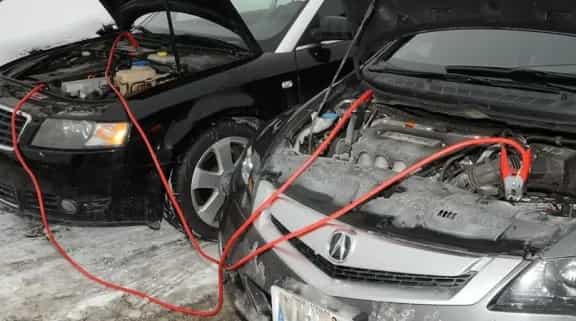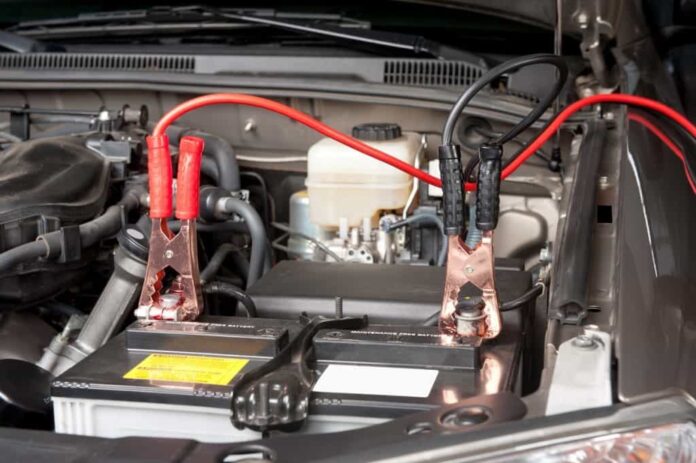Jumpstarting a car is a process that many drivers will have to do at some point. It involves using jumper cables to connect the dead battery of one car to a good battery in another car. This transfers power from the good battery to the dead one, allowing the car to start. However, if not done properly, jumpstarting a car can be dangerous or even cause damage to the cars involved. In this article, we will provide a step-by-step guide on how to jumpstart a car with jumper cables, as well as important safety precautions to take before starting.
Our step-by-step guide takes you through how to safely jumpstart your car battery, so you can get your car moving again. If your car battery does ever need a jumpstart, we have a wide range of jump leads available to order, helping to give your vehicle the extra lease of life it needs to get going again.
Safety First: Precautions You Need to Take Before Starting
Before jumpstarting a car, there are several safety precautions that you need to take to ensure that the process is done safely. First, make sure that the cars are parked close enough to each other so that the jumper cables can reach, but not touch. Second, both cars should be turned off, and the keys should be removed from the ignition. Third, put on safety goggles and gloves to protect yourself from potential electrical shocks. Fourth, make sure that the jumper cables are not frayed or damaged. Finally, never attempt to jumpstart a car with a damaged battery or leaking fluids.
Step-by-Step Guide: How to Jumpstart a Car with Jumper Cables
1. Find A Car With A Working Battery
Bring a car with a working and fully charged battery close to the front of your vehicle, so the jumper cables can easily reach each other. Make sure the cars don’t touch each other during this process.
When the cars are within a reasonable distance of each other, ensure they are both parked up with the handbrakes on. Then, remove the keys from the ignition of each car and open each car bonnet to locate the batteries.
2. How To Connect The Jump Leads

Untangle your jump cables, making sure they are not damaged and that you have one red clamp and one black clamp in each of your hands. From this point, you want to make sure none of the jump cable clamps touch each other.
Connecting To The Flat Battery
Locate the positive side of your flat battery; this should have a positive (+) sign on it and a red cable connecting it. Connect the red (positive) jump lead cable to the positive terminal on the flat battery.
After doing this, you need to place the black negative (-) jump lead cable onto a piece of plastic, NOT METAL, or on the floor if it will reach.
Connecting To The Fully Working Battery
With the remaining two jump leads, find the positive and negative sides of the fully working battery. Connect the positive (red) cable to the positive terminal and the negative (black) cable of the fully working battery.
Once you have done this, it is time to connect the final clamp.
Connecting The Final Clamp
DO NOT connect the final clamp to the negative terminal of your flat car battery. What you want to find is a bare piece of metal that isn’t a moving part, or connected to any electrical components, so it can act as a grounding point.
Some cars have an area known as an ‘earthing rod,’ so check your owner’s manual to see if your car has one of these so you can connect the final clamp to.
Be warned, connecting the final clamp to the negative terminal of your flat car battery can create a spark. Flat batteries can produce hydrogen gas too, which is highly flammable. If not treated safely, it could cause the battery to explode.
3. Jump Starting The Engine
When all the jump cables have been connected, you can turn on the engine of the car with a good battery. Leave it to run for two minutes.
Once done, start the ignition of your car with the flat battery. How long it takes to jump-start is dependent on the amount of charge needed for the flat battery, but we advise waiting ten minutes for the flat battery to charge up.
After ten minutes, turn the engines off on both cars and safely disconnect the jumper cables. You do this by removing them in the opposite order to the way they were connected. Again, make sure that none of the clamps touch each other as you take them off.
What to Do Next: After You’ve Jumpstarted Your Car Successfully
Once you’ve jumpstarted your car, there are a few things you should do to ensure that it continues to run smoothly:
- Drive your car for at least 15 minutes to recharge the battery. Avoid turning off the engine during this time, as this can drain the battery again.
- Consider having your battery and charging system checked by a professional. If your battery is old or damaged, it may need to be replaced.
- Make sure you keep a set of jumper cables in your car at all times. You never know when you might need them.
- Be aware that jumpstarting a car can be dangerous if not done correctly. Always follow the steps carefully and take appropriate safety precautions (such as wearing gloves and eye protection).
- If your car still won’t start after jumpstarting it, there may be a more serious issue at play. In this case, it’s best to call a professional mechanic for assistance.
Tips and Tricks: Common Mistakes to Avoid During the Process
Jumpstarting a car can be straightforward if you follow the steps properly. However, there are a few common mistakes that people make that can lead to damage to the car or even injury. One mistake is connecting the cables in the wrong order. Another mistake is allowing the clamps to touch each other while connected to the battery, which can cause sparks. Additionally, leaving the cars running for too long or attempting to jumpstart a car with a damaged battery can be dangerous. To avoid these mistakes, carefully follow the step-by-step guide and take your time during the process.
Jumpstarting a car with jumper cables is a simple process that can save you time, money, and frustration. By following the steps outlined in this article, you can safely and effectively jumpstart your car and get back on the road quickly. Just remember to take appropriate safety precautions and follow the steps carefully, and you’ll be back behind the wheel in no time.


